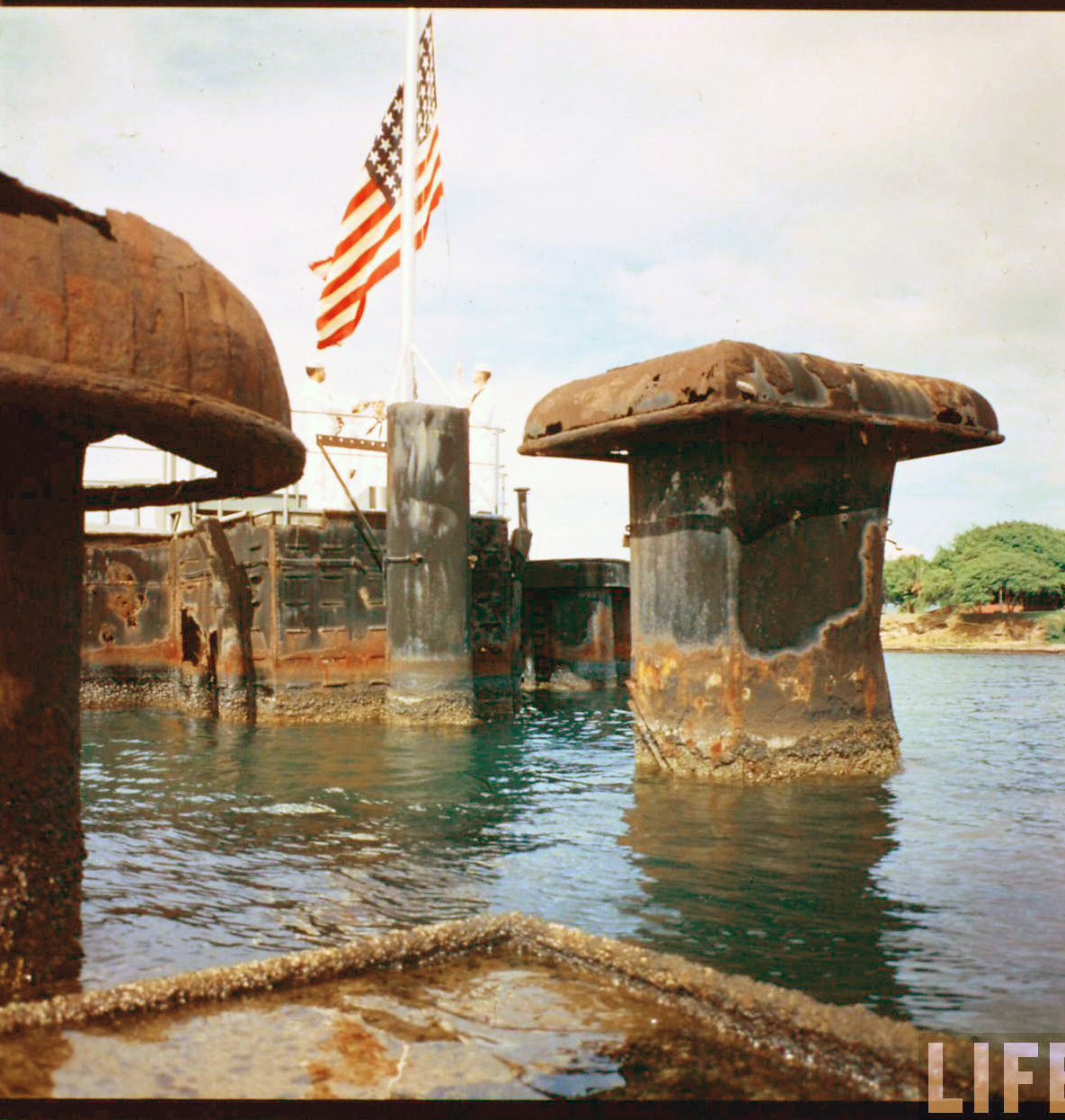In continuation of my previous post, please see the adjusted photo set to a width of 1200 pixels to appear here.
The slightly fuller photo can be seen by following the link below the picture.
 http://www.alx.com/punchbowl/BB39_rust.jpg
http://www.alx.com/punchbowl/BB39_rust.jpgPlease note that I am making NO claim as to the accuracy of any of the colors in this picture!
I would expect the photographer's intent was to capture the idea of the Flag rising above the wreck of the ashes of the Arizona, and thus the exposure was set to feature the flag which was in broad daylight and the sailors dressed in white, not the ship. He was a magazine photographer hoping to tell and sell a story, not a modeller focused on the details of the ship!
My goal in the adjustments was to bring out the details in the shadows and tweak the color to compensate for the fading of the yellow dye, basing my efforts on a very subjective interpretation of the color of the rust. In that, I feel I was successful as streaking in the rust snapped into focus while I was working, revealing patterns that looked right hidden behind the blue cast. You will also notice that areas in deeper shadow are more blue than areas not in shadow. That helped me to judge how much was enough and not too much since that is how film responds, especially films of that era. Shadow areas would appear bluer.
But the problem with this kind of "correction" is that it is broad, altering the entire picture.
While my efforts may be "spot on" for certain areas of certain objects, they also may have introduced yellow into elements in the film that never had any yellow dye to begin with and hence nothing to fade. In essence, you correct one error to introduce another, and on and on.
In reality, there can be no 100% correction.
The color shift with age is a known scientific fact. Yellow dye fades.
The dye has an advantage over the would be restorer - for any given molecule, it knows it is a yellow dye and will fade with precision. The restorer (at least at any conventional level of equipment) has no way of knowing which molecules were yellow. All he can do is make broad adjustments.
In THEORY, a really good photoshop person could isolate and adjust area by area and get closer to the truth. The problem is that to achieve accuracy, they would have to know precisely what the original color was in the first place, otherwise you are still left with an interpretation, not fact. To this day we still have arguments over what that original colors were, so no reference samples for the restoration.
To add further complexity in this case you have the combined effects of fading in a tropical sun, rain, wind, salt and rust streaks where the color changes by the milimeter. You don't know what reference to adjust to.
Perhaps, one day, someone will perfect a way of marrying an electron microscope to a computer to isolate the molecules one by one in the dye layers of film to tell what the original color OF THE FILM was and create a restoration based on that. But that would still only restore THE FILM as processed.
Then we will still face the myriad problems that, with all the variations in film, storage, processing, lighting, exposure, filtration, etc., we will never know if the film was telling us the truth.
A good color monitor these days is able to resolve over some 16 million colors. Reality is infinite.
The errors in film are so slight and subtle that they can change a "perfect neutral gray" to a blue, yellow, green, majenta, whatever color you can imagine, based on something as small as whether a cloud was passing overhead, how thick it was, or a 1 degree error in the temperature of one of the many chemical baths the film was processed in.
Like the many incredible models on this site, photo analysis and restoration is still, in the end, only an interpretation and open to artistic license.
Just don't ever think you can be certain about a color based on a photo. You may be right, you may be wrong. In the end it will still only be an educated guess.



